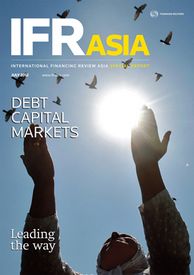Private party
Wealthy Asian investors are driving a boom year for bond offerings from Asia, typically an equity-dominated region. However, are private clients here to stay?

To see the digital version of this report, please click here.
To purchase printed copies or a PDF of this report, please email leonie.welss@lseg.com and shahid.hamid@lseg.com
Wealthy Asian investors are driving a boom year for bond offerings from Asia, typically an equity-dominated region. However, are private clients here to stay?
Asia’s domestic capital markets are again showing resilience to external shocks. Even as international bond sales hit record volumes, new products and growing cross-border interest are keeping activities running at a rapid pace.
Even in deposit-rich Asia, the introduction of Basel III rules is pressuring banks to boost capital. Regulators have given a cautious thumbs-up to loss-absorbing subordinated debt, but recent issuance in the region has failed to create a model for others to follow.
When the Philippines priced a global bond in pesos in September 2010, market participants predicted a wave of similar deals across Asia. Despite the obvious advantages for issuers, investors are dragging their feet.
Australia’s domestic debt market is enjoying a new lease of life after the introduction of covered bonds. However, the popular new product is overshadowing unsecured and securitised bonds, and does nothing to make it easier for Australia’s corporate issuers.
Asian rivals are still determined to set up their own Islamic finance infrastructure, eyeing Malaysia’s successes. While plenty will try, the biggest threat to Malaysia’s dominance looks likely to come from an entirely different source.
The Samurai bond market is becoming a popular alternative source of funding for South Korean borrowers, while the high credit quality is tempting Japan’s conservative investors to broaden their horizon.